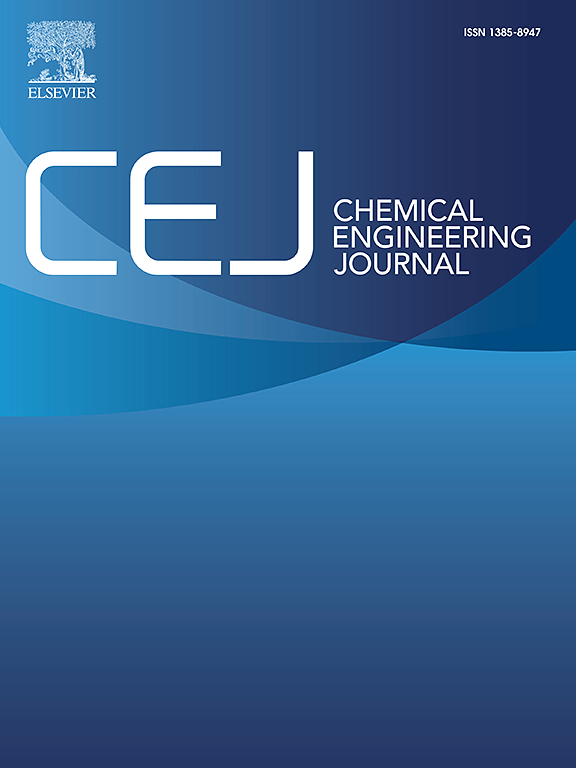可电离膜融合脂质体高效移植富含STING蛋白的内质网用于肿瘤免疫治疗
IF 13.2
1区 工程技术
Q1 ENGINEERING, CHEMICAL
引用次数: 0
摘要
肿瘤细胞中cGAS-STING通路的表观遗传沉默显著影响肿瘤免疫监视,对免疫治疗提出了重大挑战。为了解决这个问题,我们开发了一种可电离膜融合脂质体系统,能够将富含STING蛋白的内质网(ER)直接移植到癌细胞的细胞质中,从而重新激活被抑制的STING途径。通过用去甲基斑蝥素(DMC,一种抗肿瘤药物)修饰脂质体,该系统在生理条件下保持表面中性电荷,从而增强循环稳定性并减少肝脏清除率。在轻度酸性肿瘤微环境中,DMC的裂解诱导电荷反转,从而恢复膜融合能力,促进肿瘤特异性积累。肿瘤细胞中STING通路的重新激活,结合dmc诱导的肿瘤抗原释放,协同刺激免疫细胞募集,有效地将免疫上的“冷”肿瘤转化为“热”肿瘤。这种治疗策略利用内源性细胞器来源的生物材料,通过直接将功能蛋白和生物活性成分输送到细胞质中来恢复细胞功能。总之,我们的研究为利用天然生物材料及其复合材料实现复杂疾病的创新治疗提供了机制基础和治疗概念验证。本文章由计算机程序翻译,如有差异,请以英文原文为准。


Efficient transplantation of STING protein-enriched endoplasmic reticulum for tumor immunotherapy via ionizable membrane fusion liposome
The epigenetic silencing of the cGAS-STING pathway in cancer cells significantly compromises tumor immune surveillance, posing a major challenge in immunotherapy. To address this, we developed an ionizable membrane fusion liposome system capable of transplanting STING protein-enriched endoplasmic reticulum (ER) directly into the cytosol of cancer cells, thereby reactivating the suppressed STING pathway. By modifying the liposomes with demethylcantharidin (DMC, an antitumor drug), the system maintains a neutral surface charge under physiological conditions, which enhances circulation stability and reduces hepatic clearance. In the mildly acidic tumor microenvironment, DMC cleavage induces a charge reversal of liposomes, thereby restoring membrane fusion capability and facilitating tumor-specific accumulation. Reactivation of the STING pathway in tumor cells, combined with DMC-induced tumor antigen release, synergistically stimulates immune cell recruitment, effectively transforming immunologically “cold” tumors into “hot” tumors. This therapeutic strategy leverages endogenous organelle-derived biomaterials to restore cellular functions by directly delivering functional proteins and bioactive components into the cytosol. Altogether, our study provides a mechanistic rationale and therapeutic proof-of-concept for harnessing natural biological materials and their composites to enable innovative treatments for complex diseases.
求助全文
通过发布文献求助,成功后即可免费获取论文全文。
去求助
来源期刊

Chemical Engineering Journal
工程技术-工程:化工
CiteScore
21.70
自引率
9.30%
发文量
6781
审稿时长
2.4 months
期刊介绍:
The Chemical Engineering Journal is an international research journal that invites contributions of original and novel fundamental research. It aims to provide an international platform for presenting original fundamental research, interpretative reviews, and discussions on new developments in chemical engineering. The journal welcomes papers that describe novel theory and its practical application, as well as those that demonstrate the transfer of techniques from other disciplines. It also welcomes reports on carefully conducted experimental work that is soundly interpreted. The main focus of the journal is on original and rigorous research results that have broad significance. The Catalysis section within the Chemical Engineering Journal focuses specifically on Experimental and Theoretical studies in the fields of heterogeneous catalysis, molecular catalysis, and biocatalysis. These studies have industrial impact on various sectors such as chemicals, energy, materials, foods, healthcare, and environmental protection.
 求助内容:
求助内容: 应助结果提醒方式:
应助结果提醒方式:


